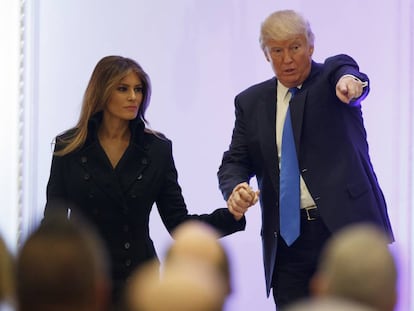No border for Mexican food
Sandwich bread or nachos? Ketchup or salsa? In the US, the answers prove Trump's wall not culinary
The American market consumes more tortillas than sandwich bread and Mexican salsa has nearly doubled the sales of ketchup, according to the National Restaurant Association, a hospitality trade organization and lobby group.

Ketchup, which once defined popular American cuisine, has been displaced by its spicy southern counterpart, which was even declared an indispensable ingredient for a Super Bowl party. Guacamole is also invited to the all-American festivities, and avocado sales have hit record highs.
In the United States, there are more than 57,000 Mexican restaurants, with annual sales hovering around $38 billion, according to market research firm IbisWorld. Mexican food has also overtaken hamburgers to become the America’s third favorite cuisine. It is estimated that the Hispanic food market has grown 31% over the last five years. Quite some time has passed since Mexican food colonized the United States of America.
Last Saturday, during Donald Trump’s inauguration in Washington, parts of Seventh Street were cut off by security fences. Seventh Street, a main artery of the city, is home to three of Spanish celebrity chef Jose Andrés’ seven restaurants in the American capital. Two were outside of the protected area, but the wall of his third restaurant dutifully supported one of the fences that demarcated Trump’s inaugural party.
The restaurant is called Oyamel, and was once considered the second best Mexican restaurant in the country. The top Mexican restaurant is usually considered to be Topolobampo in Chicago and the restaurants have a lot in common. Both have been frequented by the Obama family, neither is owned by a Mexican and both are contemporary takes on traditional Mexican cuisine. They are not trivial facts and demonstrate characteristics of a type of food that is on the rise in Trump’s America.
Ketchup, which once defined popular American cuisine, has been displaced by spicy Mexican salsa
It’s not all Taco Bell (which, by the way has more than 5,500 restaurants in all 50 states), or other chains such as Odoba, Chipotle, Baja Fresh, El Pollo Loco or Taco Cabana. The influence of Mexican cuisine has transcended fast food to become a trend in high-end restaurants. This is demonstrated by restaurants like Mary y Tito’s in Albuquerque, New Mexico which won the prestigious James Beard prize; Mexique, in Chicago, Empellón Cocina and Cosme, by Enrique Olvera, both in New York; and newer initiatives like Tintoreto in Los Angeles, spearheaded by Maycol Calderón.
Back to the Inaugural scene at Oyamel – outside, the restaurant is full of Trump supporters, so passionate that they traveled to Washington to show their support. At the entrance, the fence symbolizes the wall that is to come. Inside, a new, irrevocable reality is palpably evident – no walls can stop the attraction of Mexican flavors. José Andrés, entangled in his own legal dispute with the new American president, explained it to me in other words – “the intangible has beat out the tangible.”
English version by Alyssa McMurtry.
Tu suscripción se está usando en otro dispositivo
¿Quieres añadir otro usuario a tu suscripción?
Si continúas leyendo en este dispositivo, no se podrá leer en el otro.
FlechaTu suscripción se está usando en otro dispositivo y solo puedes acceder a EL PAÍS desde un dispositivo a la vez.
Si quieres compartir tu cuenta, cambia tu suscripción a la modalidad Premium, así podrás añadir otro usuario. Cada uno accederá con su propia cuenta de email, lo que os permitirá personalizar vuestra experiencia en EL PAÍS.
¿Tienes una suscripción de empresa? Accede aquí para contratar más cuentas.
En el caso de no saber quién está usando tu cuenta, te recomendamos cambiar tu contraseña aquí.
Si decides continuar compartiendo tu cuenta, este mensaje se mostrará en tu dispositivo y en el de la otra persona que está usando tu cuenta de forma indefinida, afectando a tu experiencia de lectura. Puedes consultar aquí los términos y condiciones de la suscripción digital.
More information
Archived In
Últimas noticias
The complicated life of Francesca Albanese: A rising figure in Italy but barred from every bank by Trump’s sanctions
From digital curfews to blocking apps: How technology experts protect their children online
Why the price of coffee has skyrocketed: from Brazilian plantations to specialty coffee houses
Confined to a Cuban hospital: When electricity is a matter of life or death
Most viewed
- Pablo Escobar’s hippos: A serious environmental problem, 40 years on
- Why we lost the habit of sleeping in two segments and how that changed our sense of time
- Trump’s obsession with putting his name on everything is unprecedented in the United States
- Charles Dubouloz, mountaineering star, retires at 36 with a farewell tour inspired by Walter Bonatti
- The Florida Keys tourist paradise is besieged by immigration agents: ‘We’ve never seen anything like this’










































